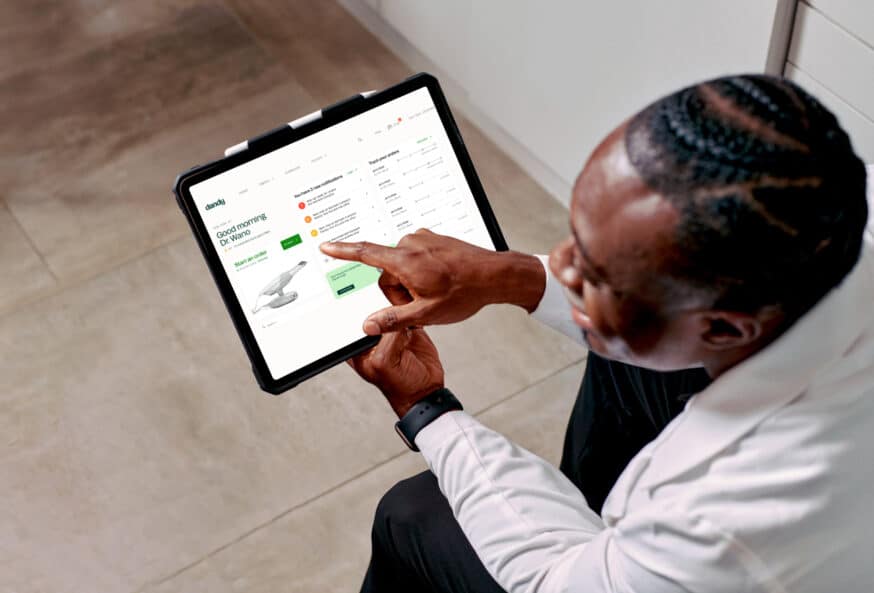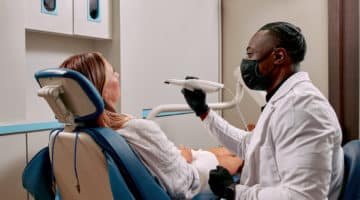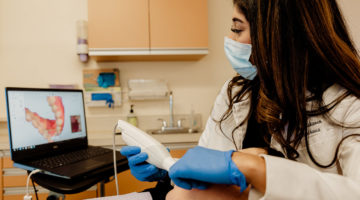You’re considering adding more digital dentistry technology into your practice but you might be hesitant because of some considerations. The challenges of dentistry that often come up as dentists think about launching a digital practice are: cost, technology barriers, the quality of digital impressions, and a lack of confidence and comfort in technology.
You’re not alone in bringing up these problems in dentistry as technological advancements are made. In fact, 25% dentists in the US don’t have plans on picking up an intraoral scanner yet. Their concerns might be some of the dentistry challenges mentioned above or, they don’t understand the benefits of digital dentistry.
Discover the challenges of dentistry many dentists face before moving forward with technological advancements and learn how to bring your practice up to speed with digital health improvements. You’ll find out the answer to ‘is digital dentistry the future?’
What challenges does digital dentistry bring?
The biggest challenges facing dentistry in general right now include staffing shortages, finding new patients, keeping up with tech-focused treatments, paying off dental school student loan debts, and staying relevant with popular dentistry practices.
Some of the answers to those challenges of dentistry could be brining your practice up to speed with digital dentistry solutions.
But there are concerns tech-cautious dental professionals bring up when discussing the challenges of dentistry you’ll need to consider before transforming your practice into one that includes the latest digital dental technology. Yes, the disadvantages of digital impressions is on this list!
There is a (short) period from switching from analog to digital dentistry that will challenge you and your staff
Chances are, your dental technicians are ready to move into a digital dentistry practice and they’re waiting for you to get on board. There’s a large gap between dental technicians, dental assistants, and dentists in terms of advancements in digital dentistry. Your technicians have likely been using a digital workflow for years and were exposed to digital technologies in their curriculum.
One of the problems in dentistry is that it’s hard to let go of old workflows and processes you’ve used for years—even decades. Learning new technology can be challenging and uncomfortable but, at the end of the day, it’ll speed up clunky admin, help you get the products back faster.
Explore the many reasons from turnaround times to patient chair time that digital dentistry creates peak practice efficiency.
Digital dentistry is a new clinical skill that needs to be learned
Just because something takes skill, precision and time learning how to use the tool doesn’t mean you avoid it. After all, perfecting your dental drill skills took time and practice before mastering dental procedures.
The same will be true when it comes to digitizing your internal processes and adopting new technology like an intraoral scanner. You and your staff will need training, even if you’re already running a good lab.
Keep in mind that an intraoral scanner is more comfortable for patients, is time-efficient for the dentist, and will ultimately simplify clinical operations once you’ve mastered how to get the perfect digital file for the lab.
Overall, it seems that the benefits of digital impressions outweigh the challenges in dentistry you might think they bring to table. And with Dandy you and your entire staff receives free training and always-on expert support.
Digital dentistry can be expensive
The cost of an intraoral scanner is one of the biggest barriers dentists have to adopting this new technology. If that’s the reason you haven’t transitioned to a digital IOS, we get it.
But digital dentistry doesn’t have to cost an arm and a leg. In recent years, improvements to intraoral digital scanners has made them less expensive to use in your practice.
Historically, as technology advances, prices come down. Apple’s first laptop in 1989 cost about $6,500! Now, you can get a MacBook for under $1,000. Fortunately, you won’t have to wait that long for prices to come down in order to take your practice up to speed in the digital world.
Some labs will invest in your practice in exchange for a minimum spend with their lab. In fact, when you become a Dandy customer, you’ll get a free 3Shape TRIOS scanner (valued at $30,000) absolutely free.
While digital dentistry requires an initial investment—just like your practice did when you opened it—digital technologies in dentistry will be a cost-effective move for your business in the long run.
Analog vs. digital Impressions
In an ever-automated world, doing things by hand—in particular using plaster casts—has become (dare we say it) old-fashioned. While no automation can replace the clinical expertise and craft of dentistry, digital tools are designed to streamline.
Some challenges of dentistry that are raised are that it can be difficult to detect deep margin lines in prepared teeth with an intraoral scanner. It’s one of the most commonly touted disadvantages of digital impressions. And of course, there’s a learning curve which adds to dentistry challenges, particularly if the dentist isn’t as tech-savvy with new equipment.
But digital impressions are good for patients—and less patient discomfort means it’ll be easier to retain patients and have them recommend you to their friends. (Which is another problem in dentistry—finding new patients.)
Intraoral scanners also allow for better communication with the dental technician and with patients.
What are the latest advancements in digital dentistry?
There are a lot of advancements to be excited about in dentistry. Here are some digital technologies to consider adding to your practice that can enhance efficiency, productivity, production, and customer experience:
- Intraoral scanning with CAD/CAM technology: Dental professionals can leverage CAD/CAM technology to craft dental restorations like crowns, bridges, veneers, inlays, onlays, dentures and more with unparalleled precision and accuracy.
- Digital impressions systems: These systems do a good job of capturing images of the gums and teeth so the dentist can eliminate conventional impressions.
- Digital radiography: A digital dental radiograph is a type of X-ray that uses less radiation than traditional X-rays. They can show small areas that aren’t available through a visual dental exam, the images can be easily stored, and they can enhance patient education through detailed images.
- Artificial intelligence: Yes, the robots are taking over dentistry, but in a good way that can help address challenges of dentistry; I suppose we should say taking over the jobs that are cumbersome for dentists. AI can enhance digital dentistry by analyzing large amounts of data quickly, improving diagnosis and treatment planning, and even helping you write better advertisements and marketing materials.
How will technology affect the future of digital dentistry?
Digital dentistry can help dentists improve efficiency, give you more time for patients, and help your practice grow, leading to higher profits. Though there will still be dentistry challenges with some of these advancements—from learning curves, to initial costs, to working through initial disadvantages of digital impressions—eventually technology should help reduce some of the challenges of dentistry you’re facing now.
Is digital dentistry the future? Yes.
Your patients will appreciate and come to look forward to a more comfortable experience in a dental practice that makes it easier for them to understand their dental health and improve upon it through patient education before their next visit.
Here’s everything you need to take your dental practice digital.



